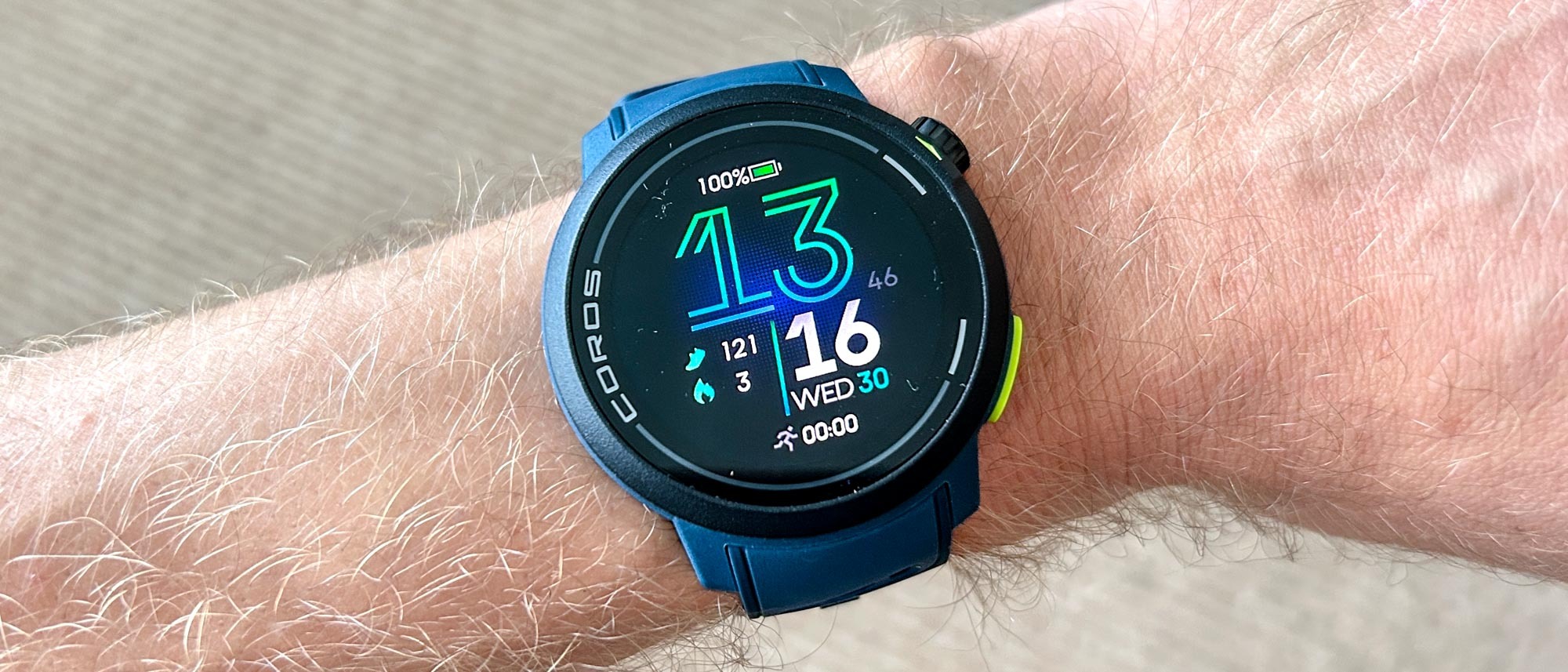Tom's Guide Verdict
The Coros Pace Pro is the first Coros watch to sport an AMOLED display and it backs up that bright display with a range of other impressive features, including offline maps, the brand’s fastest processor, and improved GPS accuracy. It looks a compelling alternative to other mid-range AMOLED sports watches like the Garmin Forerunner 265, Polar Vantage M3 and Suunto Race S.
Pros
- +
Bright AMOLED screen
- +
Offline maps
- +
Long battery life
- +
Lightweight
Cons
- -
More expensive than Pace 3
- -
All-plastic design
- -
Limited smart features
Why you can trust Tom's Guide
The Coros Pace Pro is an important addition to the brand’s range. It’s the first Coros watch with an AMOLED display, which are becoming the norm on the best sports watches, and it’s packed with features that will help it compete with mid-range rivals like the Garmin Forerunner 265 and Suunto Race S, like offline maps and long battery life in a lightweight design.
It’s a big step up in price on the Coros Pace 3, but you are getting a major design upgrade and some new features with the Pace Pro and I do think it offers value for money. I’ve been wearing the watch for over a month for my full Coros Pace Pro review, and it’s an excellent watch.
Unless you need the extra battery life or hardier metal designs of top watches, or want more smart features, then it will satisfy your every sporting need. The competition is fierce in its category though, so during my review I’ll compare the Pace Pro to the Garmin Forerunner 265, Polar Vantage M3 and Suunto Race S, which I’ve also tested, to help you pick between the quartet.
Coros Pace Pro cheat sheet
- Release date: The Coros Pace Pro launched on October 31, 2024
- Price: The Coros Pace Pro costs $349 in the U.S. and £349 in the U.K.
- What’s new? AMOLED screen, offline maps, faster processor, improved GPS chipset
- Key features: AMOLED screen, lightweight design, maps, long battery life
- Coros Pace Pro or Coros Pace 3? The Pace 3 is cheaper and lighter, but doesn’t have maps or the AMOLED display on the Pace Pro, which also has a faster processor.
Coros Pace Pro review: price and availability
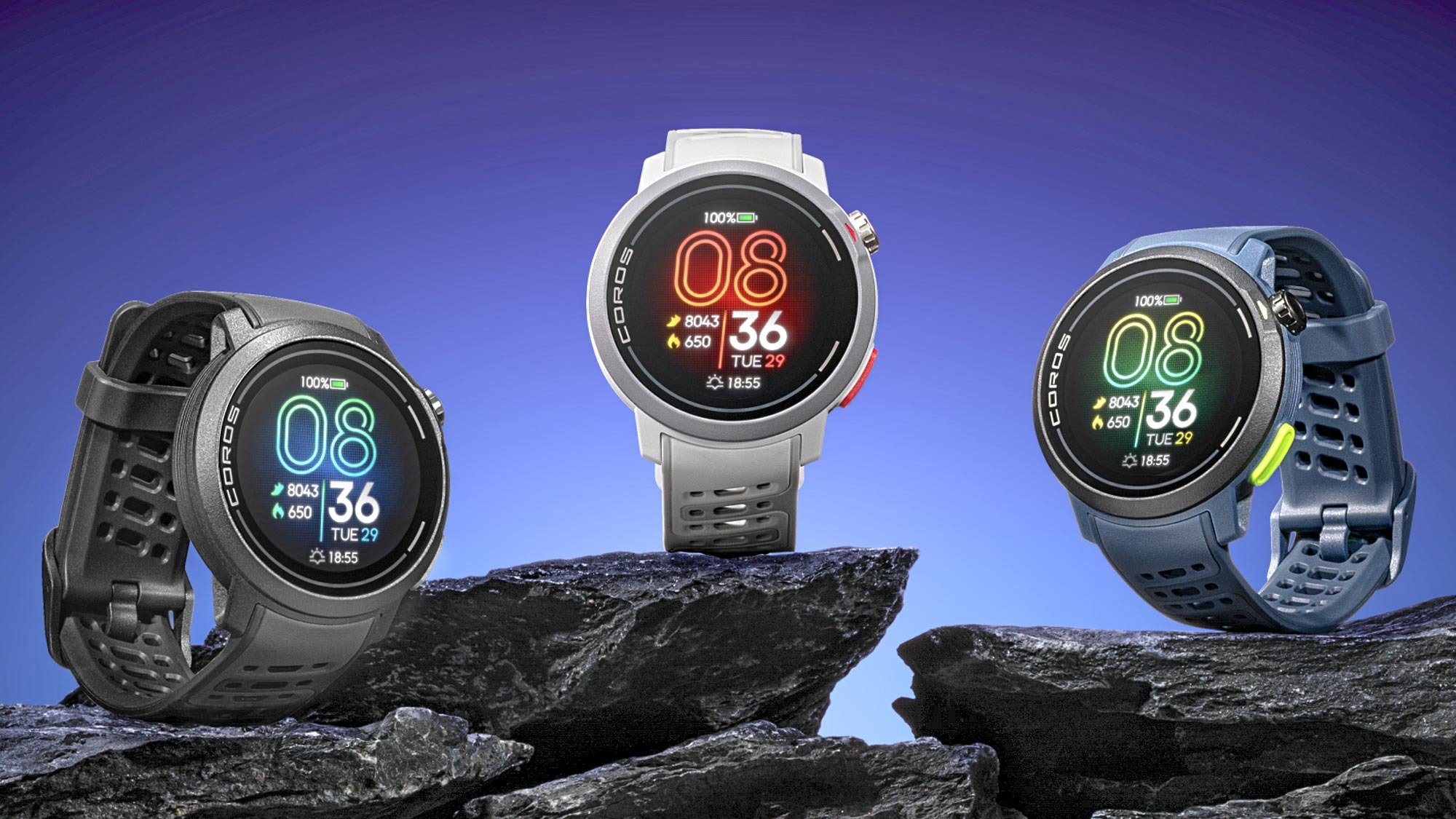
The Coros Pace Pro launched on October 31 and is available to buy now. It costs $349 in the U.S. and £349 in the U.K., and comes in three colors — blue, black and grey. It’s more expensive than the Coros Pace 3, which is $229 / £219, but cheaper than some of its key mid-range AMOLED watch rivals from other brands, like the Garmin Forerunner 265 and Polar Vantage M3, and the same price as the Suunto Race S.
Coros Pace Pro review: specs
| Price | $349 |
| Size | 46 x 14.15mm |
| Display | 1.3in 416 x 416 AMOLED |
| Bezel | Polymer |
| Screen | Glass |
| Weight | 37g (nylon band), 49g (silicone band) |
| Water resistance | 5ATM |
| Battery life (watch mode) | 20 days (6 days always-on) |
| Battery life (GPS) | 38 hours (all-systems), 31 hours (dual-band) |
| Storage | 32GB |
Coros Pace Pro review: design
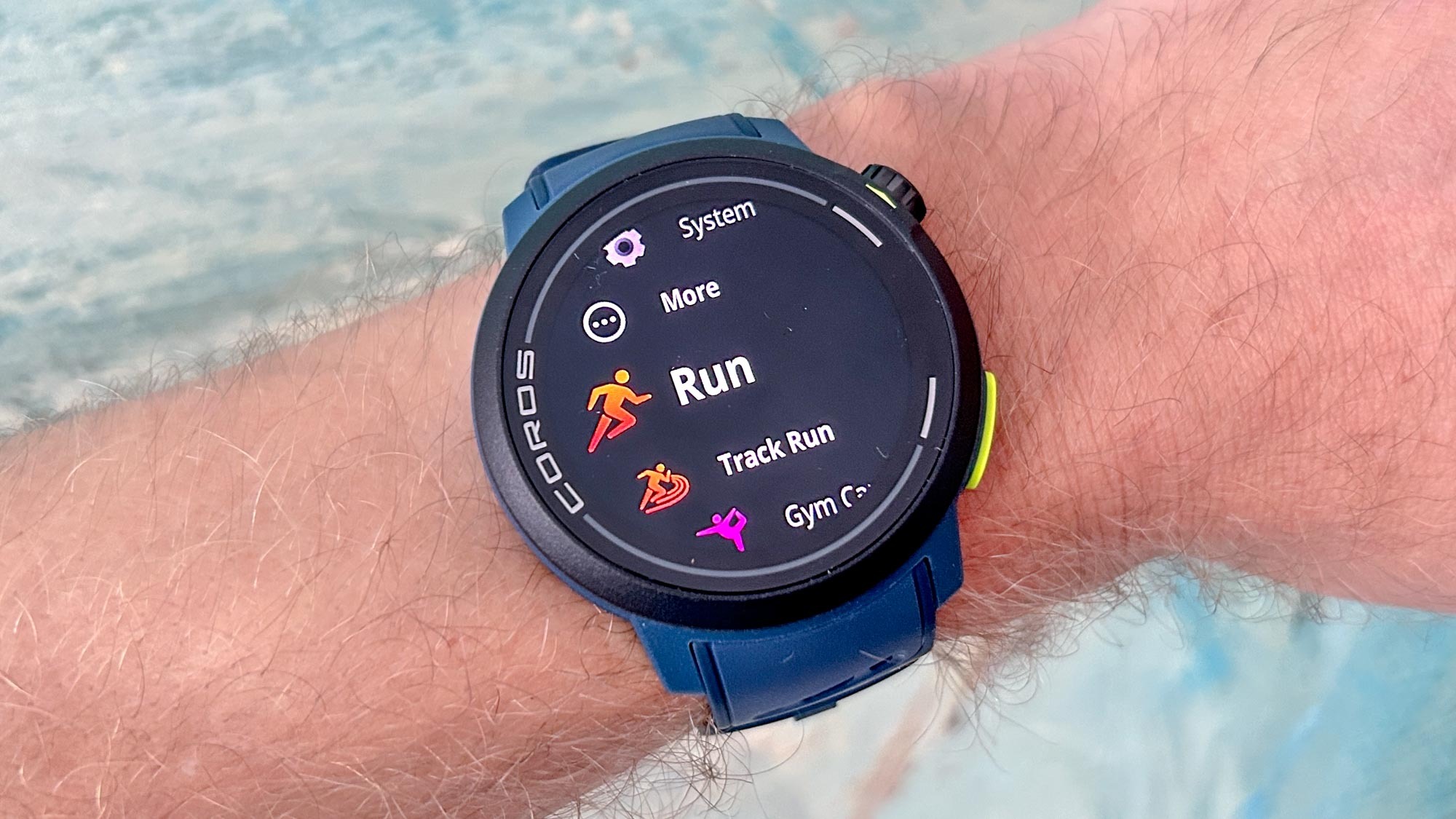
The new AMOLED screen on the Coros Pace Pro is a delight, and a big improvement on the memory-in-pixel displays we’ve seen from the brand so far. The 1,500-nit display is clear in all conditions and makes the watch more engaging to use outside of workouts, and easier to read during, especially the color maps.
I’ve always enjoyed using the Coros Pace watches partly because of their small and lightweight designs, and this is still a feature of the Pace Pro, though it is a little thicker than the Pace 3. It has a larger back button than the Pace 3, and the dial is made from stainless steel rather than plastic, which means the Pace Pro can take ECG measurements.
The materials used are not as rugged and premium as the metal cases and sapphire screens you get on more expensive Coros watches like the Vertix 2 and Apex 2, but the Pace Pro is still a good-looking watch and one that I’d be happy to wear all the time. The only thing I’m not a fan of is the silicone band it comes with — I’d trade that for a more comfortable and lightweight nylon one, from Coros or a third-party.
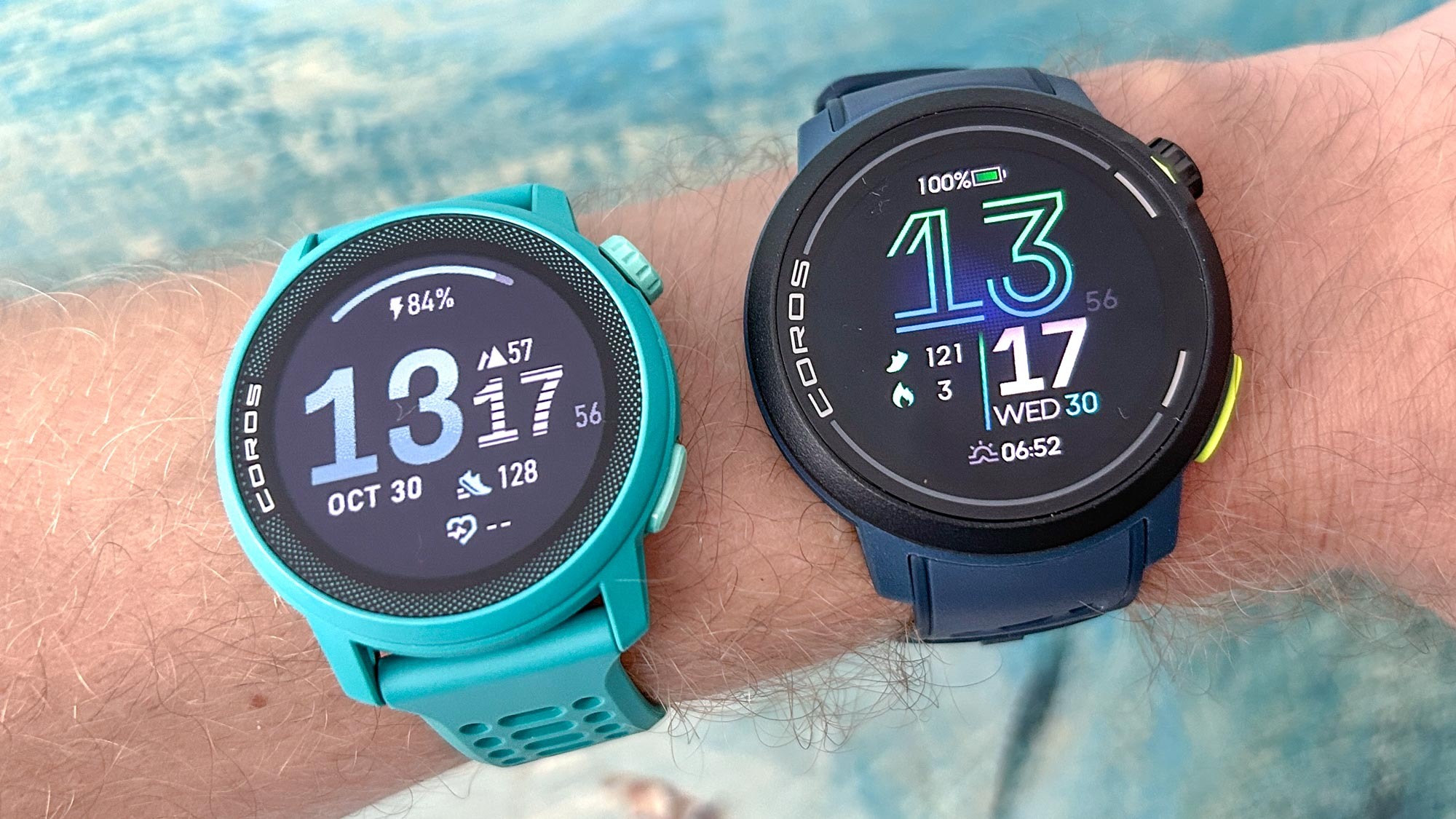
Coros has changed the charging port on the watch to be deeper, so you can’t use old Coros cables to charge it, and the brand has also taken the interesting step of including an adaptor in the box so you can charge the Pace Pro using a USB-C cable, rather than including a dedicated charging cable for the watch.
I think this is a good move as most people have a USB-C cable already, and if you don’t, you can contact Coros and they will send one out to you. It's a more environmentally-conscious approach, and while this is fairly common practice for most gadgets and phones, it is (still) a rarity for a smartwatch, which often have a unique propriety cable.
The Pace Pro has a new processor that Coros says is its fastest ever in a watch, and it is noticeably snappy when zooming in and out of maps. It also has a lot more storage than the Pace 3 with 32GB, as opposed to 4GB on the older watch.
The Coros Pace Pro connects to external sensors via Bluetooth, but not ANT+. It connected easily to a range of sensors during my testing, including several external heart rate monitors plus a speed/cadence and power sensor for cycling.
Coros Pace Pro review: sports tracking and training analysis
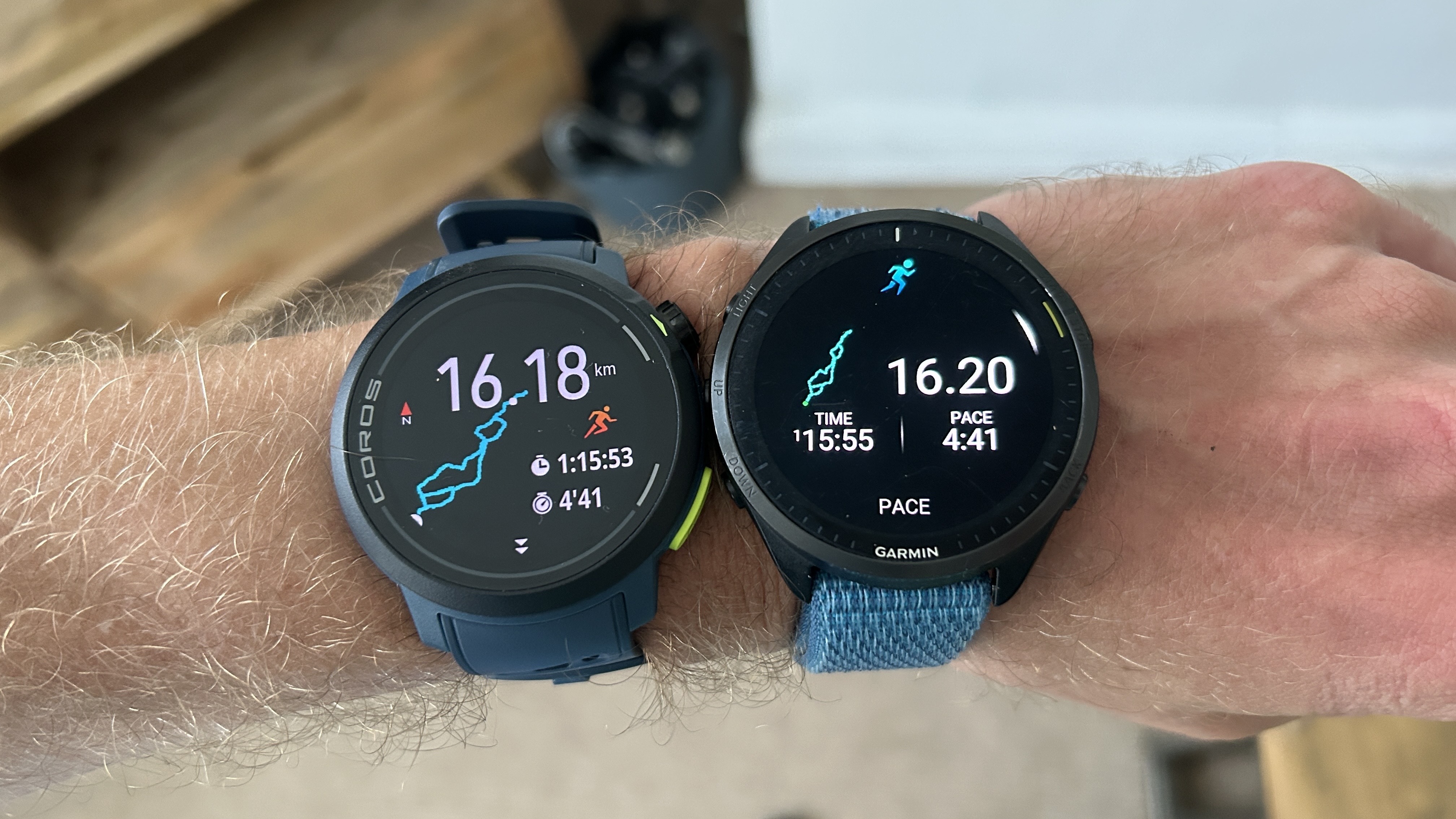
The Coros Pace Pro offers the same wide range of sports modes as other Coros models, including dedicated track run and multisport modes, though its range is not as extensive as with other brands. For one I have to use a generic Gym Cardio mode to track yoga, rather than a dedicated mode, though you can create your own sports modes in the app.
It also offers the same EvoLab training analysis as all Coros watches, which includes a breakdown of your training load, race predictions and a VO2 max estimate, and a recovery advisor.
For the most part this training analysis is useful, but there are some quirks to Coros’s advice that mean it isn’t always the clearest. The suggested training load each week isn’t as helpful for new runners as Garmin’s suggested daily workouts, and I’m still not sure what the Running Fitness score offers despite using Coros watches for several years.
You can create and add structured workouts to the watch easily using the Coros app, or set up a quick intervals session on the watch itself, and there’s a useful pacer mode for running events like 5Ks or marathons that shows you how far ahead or behind your target time you are.
Coros Pace Pro review: GPS & HR Accuracy
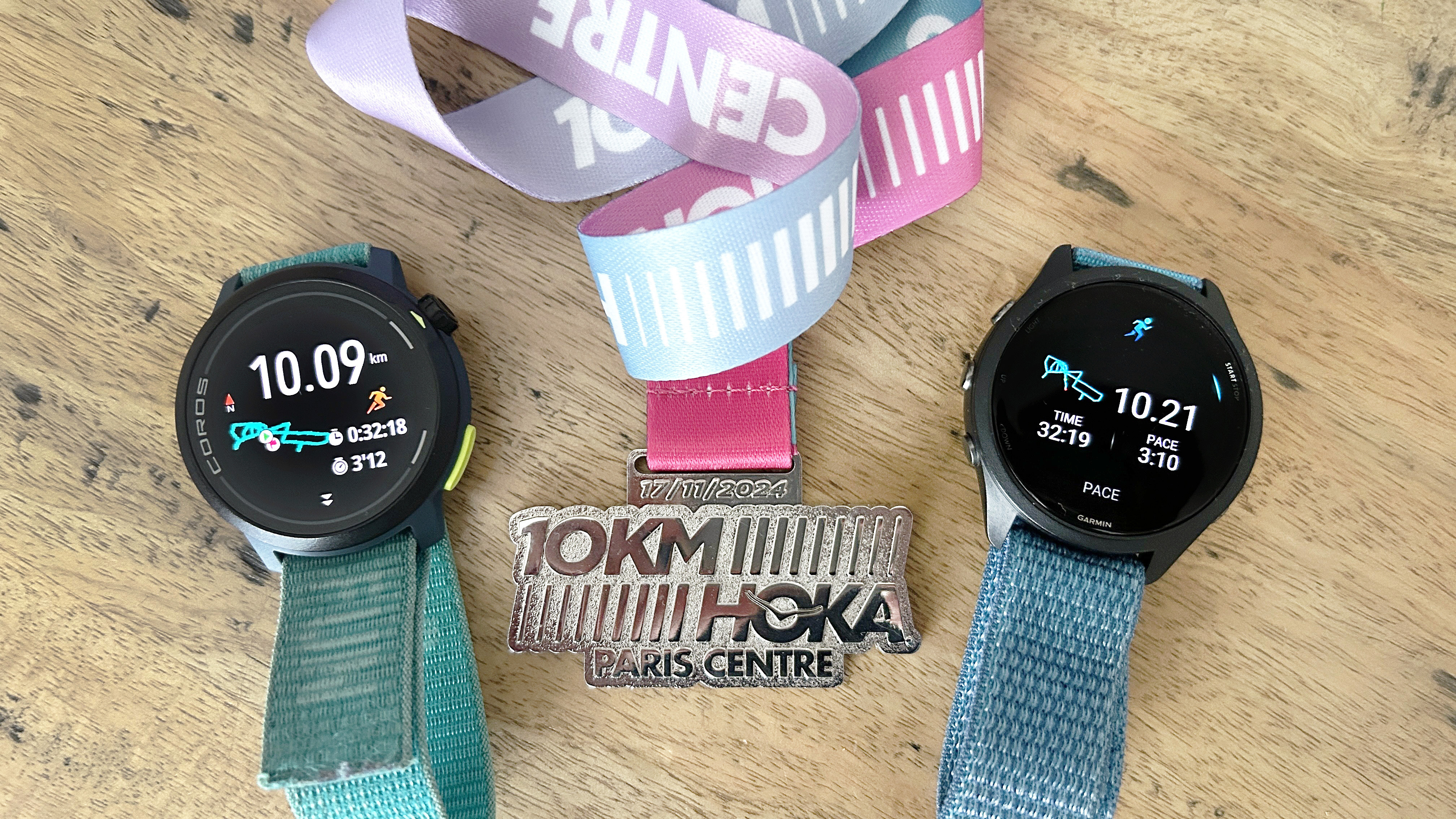
Throughout my testing of the Coros Pace Pro I have been comparing it with other devices to check its GPS and HR accuracy. I’ve used it at the same time as the Garmin Forerunner 265 and Forerunner 965, Polar Vantage M3 and Suunto Race S to look at any differences in GPS performance, and compared its heart rate tracking with a Polar Verity Sense armband and Wahoo TRACKR chest strap.
Coros suggests the heart rate accuracy of the watch should be improved based on changes to the design which means it fits more snugly than other models to improve optical heart rate readings, while a new satellite chipset and configuration is meant to improve GPS accuracy as well.
I’ve been impressed with the accuracy of the Pace Pro on both fronts. Even when running tight loops or when tackling a twisty city center 10K race in Paris, the GPS tracks have been accurate and I haven’t seen any unlikely jumps in pace when using the watch to judge my speed. It’s as accurate or more so than all of the watches I’ve compared it to.

The heart rate accuracy hasn’t been completely infallible, but optical heart rate rarely is especially when testing a watch during cold conditions, as I have with the Pace Pro, which makes taking readings harder for the sensor.
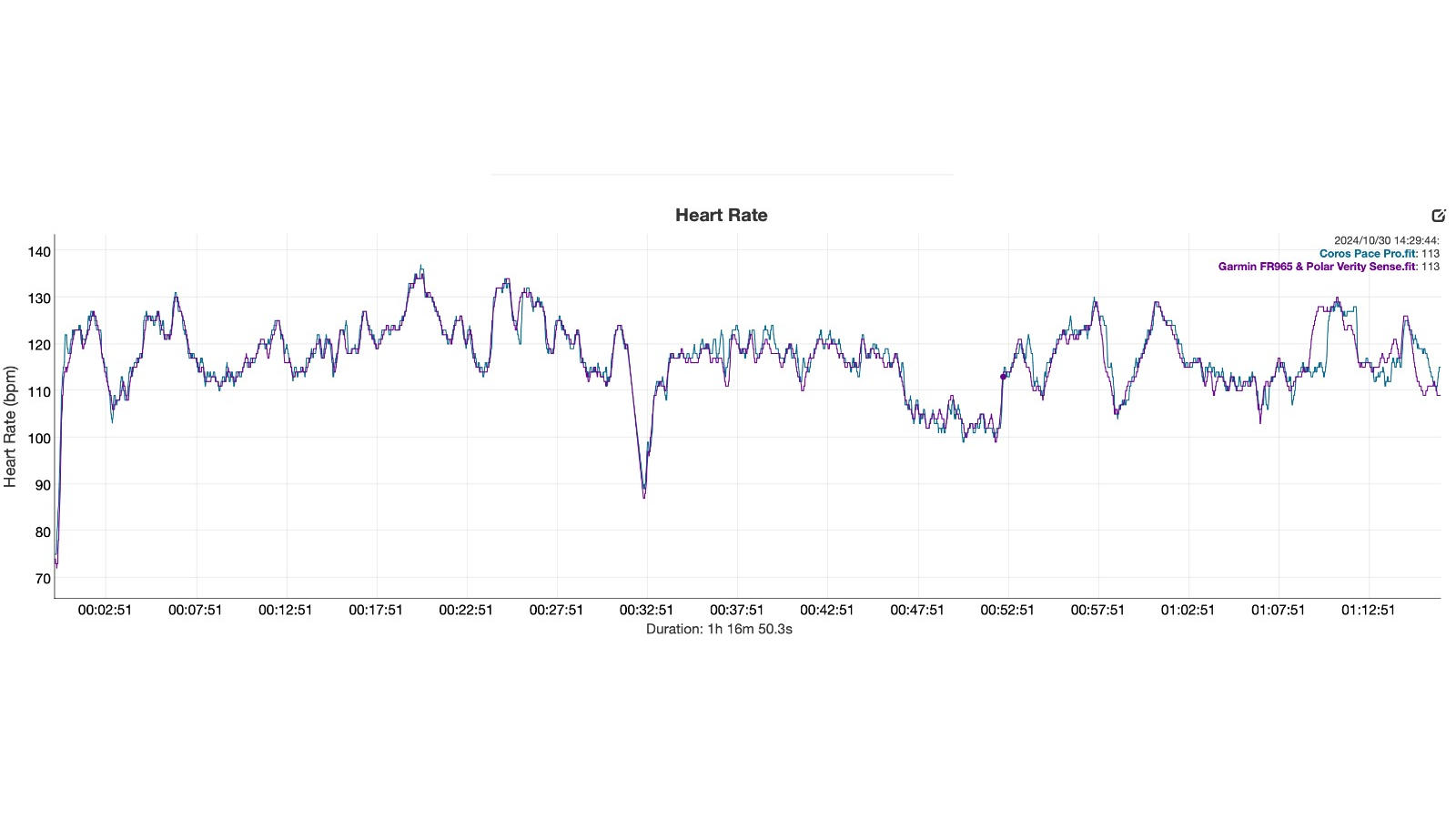
For the most part the Pace Pro has matched up closely with an external monitor’s reading even during interval sessions with sharp jumps and drops in heart rate, and while I’d probably still choose to pair a chest strap with the watch myself to get the utmost accuracy, you can use it to judge your training reliably. During my testing the Pace Pro has proved more accurate for heart rate than its mid-range rivals, the Garmin Forerunner 265, Polar Vantage M3 and Suunto Race S.
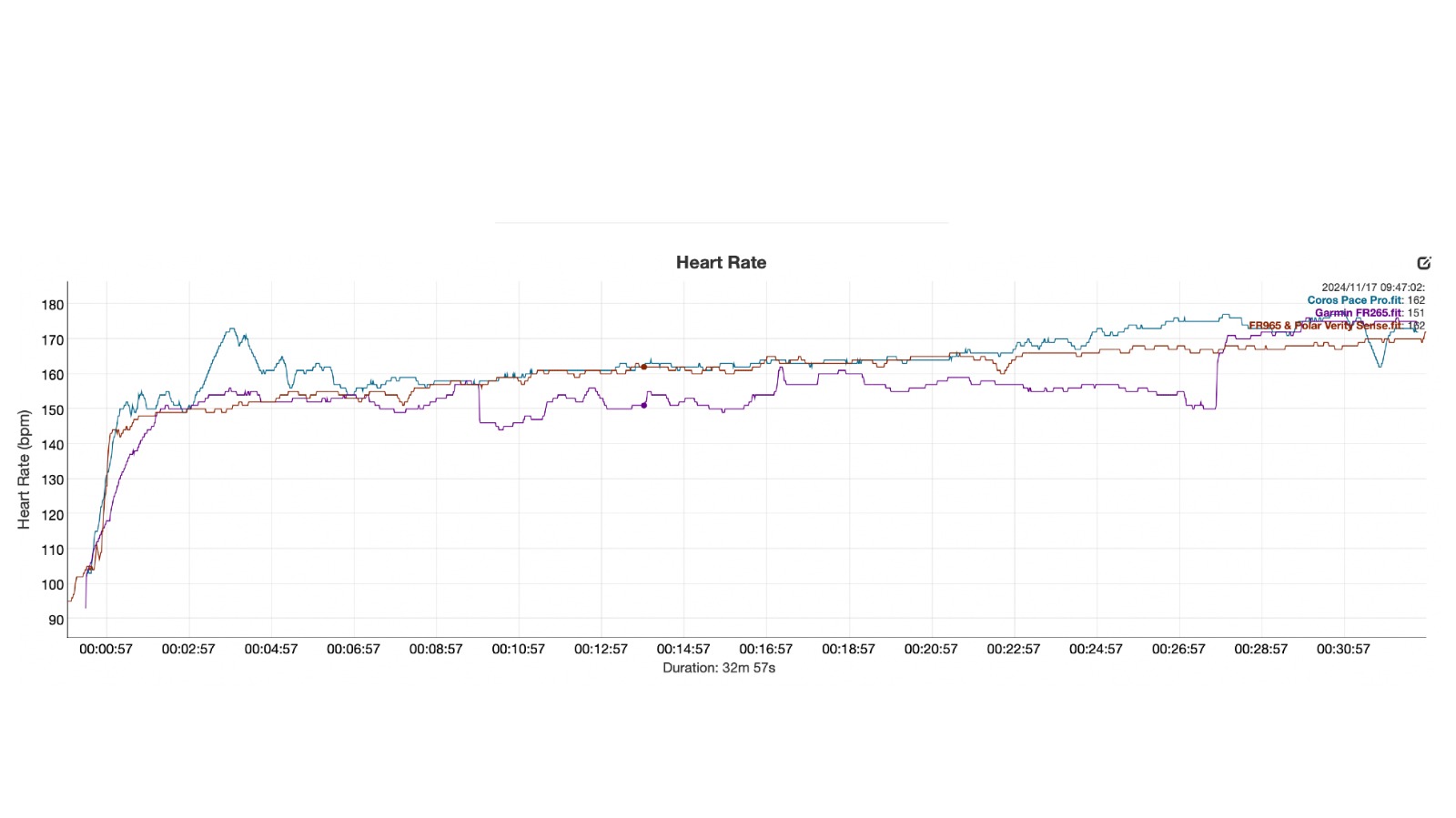
Battery Life
The Pace Pro battery life has been impressive throughout my testing. It has lasted me five or six days on a charge even with the screen always-on and when running every day with the most accurate GPS mode engaged. At one point during testing I was injured and without doing workouts the watch actually outlasted the 7-day battery life estimate Coros gives when the screen is always-on.
One thing that extends battery life is that the watch only takes heart rate readings every 10 minutes outside of workouts as default, but even when I changed this to continuous readings 24/7 the Pace Pro lasted five days. You can extend the battery life to 20 days by using the raise to wake mode instead of having the screen always-on.
For GPS workouts the Pace Pro offers up to 24 hours of dual-band GPS tracking with the screen always on (31 hours in raise to wake), and 28 hours in the slightly less accurate all-systems-on GPS mode (38 hours raise to wake). These are impressive numbers and overall the Pace Pro certainly shines on battery life compared with other AMOLED watches of its size, outlasting the Forerunner 265, Polar Vantage M3 and Suunto Race S when I used them side by side.
Maps & Navigation
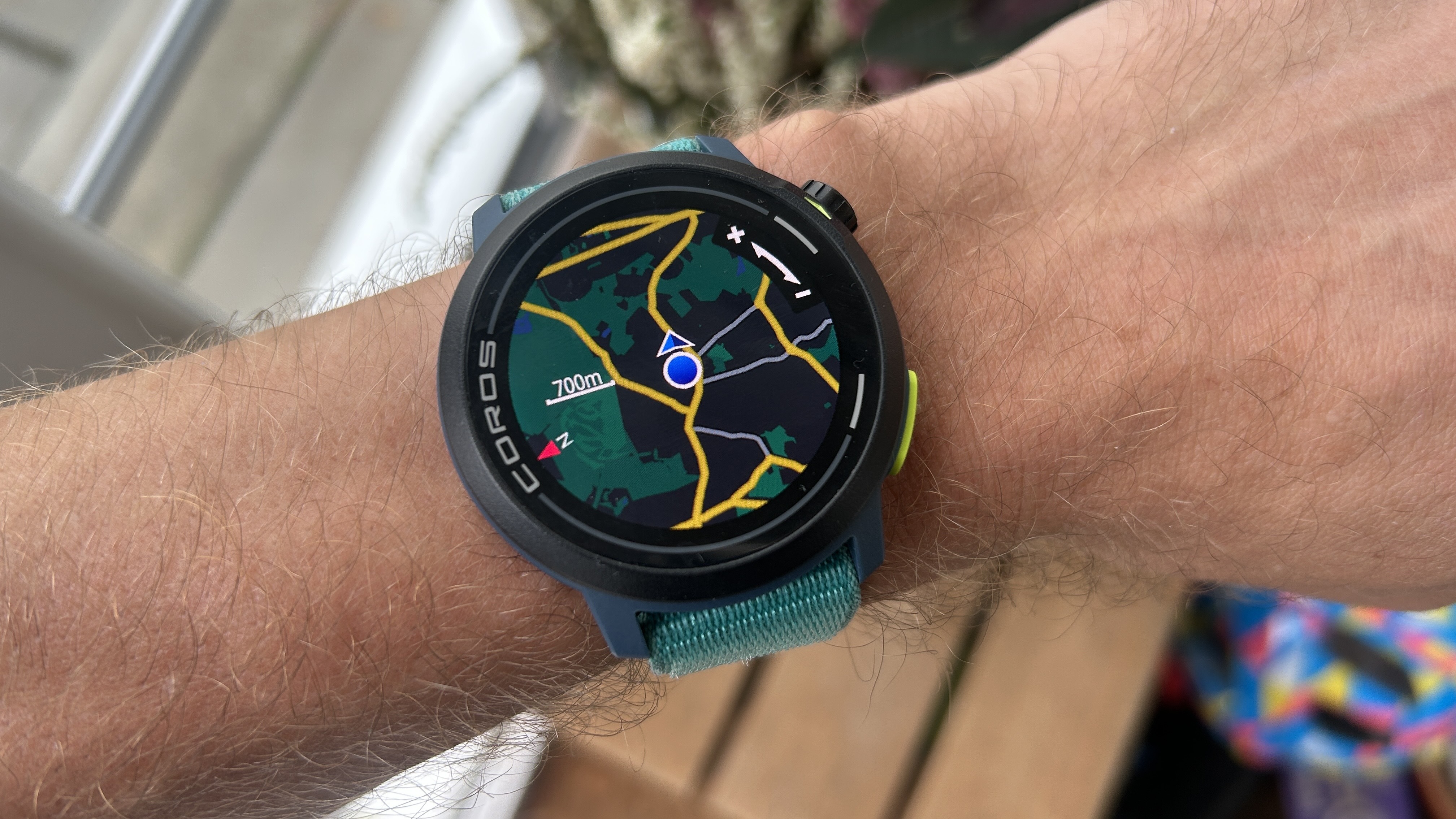
The color maps on the Pace Pro are bright and easy to use, and it’s also quick to get them onto the watch by downloading the areas you need through the Coros app. You get turn-by-turn directions on the run, and can also get directions back to your starting point during an activity if you get lost.
These maps are an upgrade on the simple line and pointer breadcrumb navigation on the Coros Pace 3, and maps are also a feature you don’t get on the Garmin Forerunner 265, though you do get them with the Polar Vantage M3 and Suunto Race S.
Maps are a feature that certainly benefit from the AMOLED screen and also the faster processor on the Pace Pro, which makes zooming and moving the map around much quicker than when using them using other Coros watches.
Smart Features
Smarts are not an area where the Coros Pace Pro excels. It does show notifications from your phone and has a useful weather widget, but the music storage feature on the watch is limited to drag and drop files — you can’t link it to a streaming service like Spotify, which you can do with Garmin watches and the best smartwatches.
There’s also limited customization options available with the watch face, with regards to the info you show on there. You can’t have the weather forecast as a complication, for example, or show your weekly training totals. Garmin, Suunto and Polar all allow more customization along these lines, and in general Garmin makes the ‘smartest’ sports watches, offering NFC payments as well as partnerships with music streaming services.
Should you buy the Coros Pace Pro?
The Coros Pace Pro is an excellent and accurate sports watch and one of the best you can get without spending big money on a top-of-the-range watch like the Garmin Fenix 8 or Coros Vertix 2S. Its all-plastic design won’t appeal to everyone, but I like how light and comfortable it is to wear, and it’s my favorite of the four great sports watches competing in its mid-range price bracket.
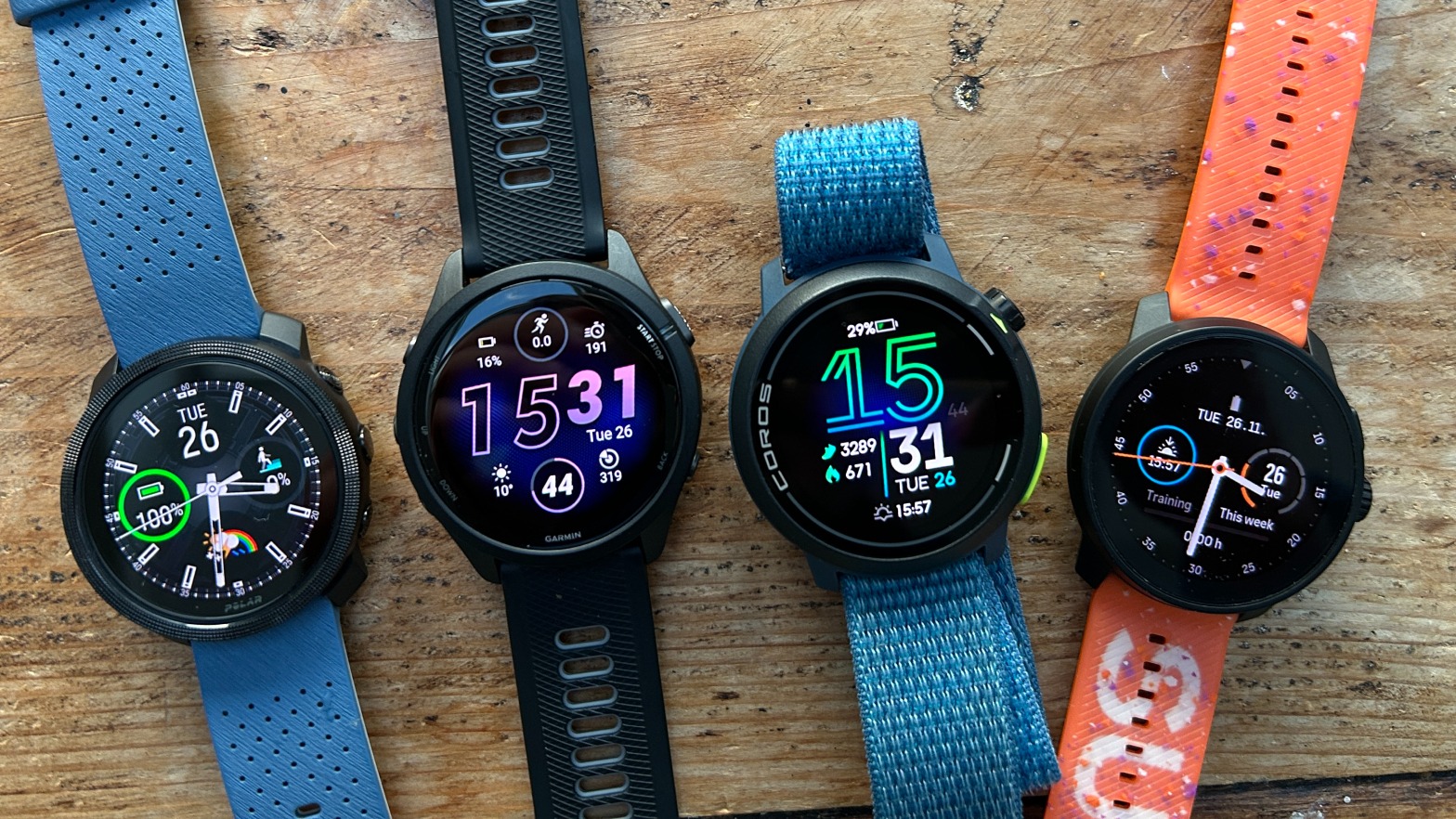
Compared to those other watches; the Garmin Forerunner 265 offers more smart features and better training analysis, and I like Garmin’s design more, but it doesn’t have maps, has shorter battery life, and is more expensive than the Coros.
The Polar Vantage M3 has a more attractive design, but I find the user interface less intuitive than the Coros Pace Pro’s, and the Pace Pro was also more accurate for me during testing and lasted longer on a charge.
I’d say the Suunto Race S provides the sternest competition, because it has a more rugged and attractive design than the Pace Pro thanks to its metal bezel and Gorilla Glass screen. I prefer the Coros user interface myself, and like that it’s lighter. It also offered better heart rate accuracy than the Suunto in my testing, but the Race S is certainly a great watch to consider as well.
Within the Coros range the Pace 3 is a cheaper alternative and an excellent sports watch in its own right, with the main upgrades on the Pace Pro being the AMOLED display and maps, so if those aren’t important to you the Pace 3 is recommended.

Nick Harris-Fry is an experienced health and fitness journalist, writing professionally since 2012. He spent nine years working on the Coach magazine and website before moving to the fitness team at Tom’s Guide in 2024. Nick is a keen runner and also the founder of YouTube channel The Run Testers, which specialises in reviewing running shoes, watches, headphones and other gear.
Nick ran his first marathon in 2016 after six weeks of training for a magazine feature and subsequently became obsessed with the sport. He now has PBs of 2hr 27min for the marathon and 15min 30sec for 5K, and has run 13 marathons in total, as well as a 50-mile ultramarathon. Nick is also a qualified Run Leader in the UK.
Nick is an established expert in the health and fitness area and along with writing for many publications, including Live Science, Expert Reviews, Wareable, Coach and Get Sweat Go, he has been quoted on The Guardian and The Independent.
